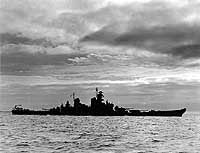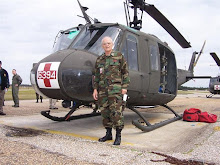I have thought I have heard it all about this disaster that BP caused. But this article is scary if it turns out to be true.
The Oil Drum is a widely respected website that focuses exclusively on the international oil industry and energy issues. Earlier this week a reader and industry insider sent this article posted on The Oil Drum. The article suggests that the well bore structure may be compromised “down hole.” If this is true, it turns this very serious situation into an absolute nightmare.This is a highly technical article to say the least. I will admit to you, my truth seeker, that I fully understood only a part of what the author was trying to convey to his colleagues. But his message is clear: BP and perhaps the US government have no intention of stopping this oil spill. In fact the only way to stop it is the use of a low yield nuclear device (Less than 1 KT [KiloTon].).
Dave wrote in with this:
I work in the oil exploration business – and I don’t scare easily when it comes to the rumors that circulate re: the Deepwater Horizon incident – but this article is downright horrific.Meanwhile, Obama golfs, vacations, and sings with Paul McCartney -
I can’t comment about how accurate it might be – the guy paints a fairly plausible picture – but it is something right out of a science-fiction horror movie – nobody (not even the author) wants to talk about what might really be needed here to stop this runaway well – and that might be a nuclear device detonation downhole to seal the wellbore.
I don’t know if either BP or the government is telling the public just how bad this might become – possibly for fear of starting some sort of panic – and Obama is clueless – and so, for that matter is Salazar — I went to college with this guy – and he is totally an affirmative action baby, a complete idiot — now elevated to a position way, way, way, way beyond his competency level.
Here is that article from The Oil Drum:
OK let’s get real about the GOM oil flow. There doesn’t really seem to be much info on TOD that furthers more complete understanding of what’s really happening in the GOM.
As you have probably seen and maybe feel yourselves, there are several things that do not appear to make sense regarding the actions of attack against the well. Don’t feel bad, there is much that doesn’t make sense even to professionals unless you take into account some important variables that we are not being told about. There seems to me to be a reluctance to face what cannot be termed anything less than grim circumstances in my opinion. There certainly is a reluctance to inform us regular people and all we have really gotten is a few dots here and there…
First of all…set aside all your thoughts of plugging the well and stopping it from blowing out oil using any method from the top down. Plugs, big valves to just shut it off, pinching the pipe closed, installing a new bop or lmrp, shooting any epoxy in it, top kills with mud etc etc etc….forget that, it won’t be happening..it’s done and over. In fact actually opening up the well at the subsea source and allowing it to gush more is not only exactly what has happened, it was probably necessary, or so they think anyway.
So you have to ask WHY? Why make it worse?…there really can only be one answer and that answer does not bode well for all of us. It’s really an inescapable conclusion at this point, unless you want to believe that every Oil and Gas professional involved suddenly just forgot everything they know or woke up one morning and drank a few big cups of stupid and got assigned to directing the response to this catastrophe. Nothing makes sense unless you take this into account, but after you do…you will see the “sense” behind what has happened and what is happening. That conclusion is this:
The well bore structure is compromised “Down hole”.
That is something which is a “Worst nightmare” conclusion to reach. While many have been saying this for some time as with any complex disaster of this proportion many have “said” a lot of things with no real sound reasons or evidence for jumping to such conclusions, well this time it appears that they may have jumped into the right place…
TOP KILL – FAILS:
This was probably our best and only chance to kill this well from the top down. This “kill mud” is a tried and true method of killing wells and usually has a very good chance of success. The depth of this well presented some logistical challenges, but it really should not of presented any functional obstructions. The pumping capacity was there and it would have worked, should have worked, but it didn’t.
It didn’t work, but it did create evidence of what is really happening. First of all the method used in this particular top kill made no sense, did not follow the standard operating procedure used to kill many other wells and in fact for the most part was completely contrary to the procedure which would have given it any real chance of working.
When a well is “Killed” using this method heavy drill fluid “Mud” is pumped at high volume and pressure into a leaking well. The leaks are “behind” the point of access where the mud is fired in, in this case the “choke and Kill lines” which are at the very bottom of the BOP (Blow Out Preventer) The heavy fluid gathers in the “behind” portion of the leaking well assembly, while some will leak out, it very quickly overtakes the flow of oil and only the heavier mud will leak out. Once that “solid” flow of mud is established at the leak “behind” the well, the mud pumps increase pressure and begin to overtake the pressure of the oil deposit. The mud is established in a solid column that is driven downward by the now stronger pumps. The heavy mud will create a solid column that is so heavy that the oil deposit can no longer push it up, shut off the pumps…the well is killed…it can no longer flow.
Usually this will happen fairly quickly, in fact for it to work at all…it must happen quickly. There is no “trickle some mud in” because that is not how a top kill works. The flowing oil will just flush out the trickle and a solid column will never be established. Yet what we were told was “It will take days to know whether it worked”….”Top kill might take 48 hours to complete”…the only way it could take days is if BP intended to do some “test fires” to test integrity of the entire system. The actual “kill” can only take hours by nature because it must happen fairly rapidly. It also increases strain on the “behind” portion and in this instance we all know that what remained was fragile at best.
Early that afternoon we saw a massive flow burst out of the riser “plume” area. This was the first test fire of high pressure mud injection. Later on same day we saw a greatly increased flow out of the kink leaks, this was mostly mud at that time as the kill mud is tanish color due to the high amount of Barite which is added to it to weight it and Barite is a white powder.
We later learned the pumping was shut down at midnight, we weren’t told about that until almost 16 hours later, but by then…I’m sure BP had learned the worst. The mud they were pumping in was not only leaking out the “behind” leaks…it was leaking out of someplace forward…and since they were not even near being able to pump mud into the deposit itself, because the well would be dead long before…and the oil was still coming up, there could only be one conclusion…the wells casings were ruptured and it was leaking down hole…
What does this mean?It means they will never cap the gusher after the wellhead. They cannot...the more they try and restrict the oil gushing out the bop?...the more it will transfer to the leaks below. Just like a leaky garden hose with a nozzle on it. When you open up the nozzle?...it doesn't leak so bad, you close the nozzle?...it leaks real bad, same dynamics. It is why they sawed the riser off...or tried to anyway...but they clipped it off, to relieve pressure on the leaks "down hole". I'm sure there was a bit of panic time after they crimp/pinched off the large riser pipe and the Diamond wire saw got stuck and failed...because that crimp diverted pressure and flow to the rupture down below.
Contrary to what most of us would think as logical to stop the oil mess, actually opening up the gushing well and making it gush more became direction BP took after confirming that there was a leak. In fact if you note their actions, that should become clear. They have shifted from stopping or restricting the gusher to opening it up and catching it. This only makes sense if they want to relieve pressure at the leak hidden down below the seabed.....and that sort of leak is one of the most dangerous and potentially damaging kind of leak there could be. It is also inaccessible which compounds our problems. There is no way to stop that leak from above, all they can do is relieve the pressure on it and the only way to do that right now is to open up the nozzle above and gush more oil into the gulf and hopefully catch it, which they have done, they just neglected to tell us why, gee thanks.
A down hole leak is dangerous and damaging for several reasons.
There will be erosion throughout the entire beat up, beat on and beat down remainder of the "system" including that inaccessible leak. The same erosion I spoke about in the first post is still present and has never stopped, cannot be stopped, is impossible to stop and will always be present in and acting on anything that is left which has crude oil "Product" rushing through it. There are abrasives still present, swirling flow will create hot spots of wear and this erosion is relentless and will always be present until eventually it wears away enough material to break it's way out. It will slowly eat the bop away especially at the now pinched off riser head and it will flow more and more. Perhaps BP can outrun or keep up with that out flow with various suckage methods for a period of time, but eventually the well will win that race, just how long that race will be?...no one really knows....However now?...there are other problems that a down hole leak will and must produce that will compound this already bad situation.
Finish reading this here.
Not only is oil and tar washing up upon the beaches of the states bordering the Gulf of Mexico, but now it looks as if we have inadvertently tapped into an enormous cache of frozen Methane gas:
Surf On Pensacola Beach Boiling Like Acid
And just when you thought it can't get any worse, comes this from The Washington Post:
Each day, another way to define worst-case for oil spillI'm now going to shock you all!
An enduring feature of the gulf oil spill is that, even when you think you've heard the worst-case scenario, there's always another that's even more dire.
The base-line measures of the crisis have steadily worsened. The estimated flow rate keeps rising. The well is like something deranged, stronger than anyone anticipated. BP executives last month said they had a 60 to 70 percent chance of killing it with mud, but the well spit the mud out and kept blowing.
The net effect is that nothing about this well seems crazy anymore. Week by week, the truth of this disaster has drifted toward the stamping ground of the alarmists.
The most disturbing of the worst-case scenarios, one that is unsubstantiated but is driving much of the blog discussion, is that the Deepwater Horizon well has been so badly damaged that it has spawned multiple leaks from the seafloor, making containment impossible and a long-term solution much more complicated.
Video from a robotic submersible, which is making the rounds online, shows something puffing from the seafloor. Some think it's oil. Or maybe -- look again -- it's just the silt blowing in response to the forward motion of the submersible.
More trouble: A tropical wave has formed in the Caribbean and could conceivably blow through the gulf.
"We're going to have to evacuate the gulf states," said Matt Simmons, founder of Simmons and Co., an oil investment firm and, since the April 20 blowout, the unflagging source of end-of-the-world predictions. "Can you imagine evacuating 20 million people? . . . This story is 80 times worse than I thought."
The bull market for bad news means that Coast Guard Adm. Thad Allen, the government's point man for the crisis, is asked regularly about damage to the well bore, additional leaks and further failures. "Can you talk a little about the worst-case scenarios going forward?" a reporter asked Tuesday. "What happens if the relief wells don't work out?"
"We're mitigating risk on the relief well by drilling a second relief well alongside it," responded Allen, possibly the least excitable figure in this entire oil crisis.
He said he's seen no sign of the additional leaks that have gotten so many bloggers in a lather. But Allen's briefings offer plenty of fodder for the apocalyptic set. Allen repeatedly has acknowledged that there could be significant damage to the well down below the mud line. That's why, he said, the top kill effort last month was stopped: Officials feared that if they continued pumping heavy mud into the well, they would damage the casing and open new channels for hydrocarbons to leak into the rock formation.
Finish reading here.
This is NOT Barack Obama's fault! It is the fault of BP and the mentality of their corporation to cut corners, ignore warnings from their engineers and putting profits before safety, and an attitude of Screw the small people".
It looks like they have screwed us up royally. Right up the keister!
Now what do we do? It looks like we have an oil well that can't be stopped, a company who has an attitude against owning up to their villainy, and a President who is not capable of the leadership to give the appearance at least, that things are going to be better. You should have gone to the Gulf in the first couple of days after the spill Mr. President, not gone to the golf course, the baseball game, or the road trips you took. You waited too long to address the nation, and your administration has and is still lying to us about the nature of this spill.
It is time for all parties to come clean about Deepwater Horizon well!
LET US KNOW THE TRUTH!
We are adults, Mr. President, we can handle the truth. We are coming to the realization that we will no longer be able to fish the waters of the Gulf of Mexico, that the price of seafood will go up, that oysters and shrimp might never again be part of those waters or part of our meals, that a fragile habitat is gone for good, that the way of life and livelihood of millions of Americans has been destroyed, and that lying to us about the extent of this disaster is NOT going to help!





























.jpg)









.jpg)




































































.jpg)

.jpg)











.jpg)



















I have been reading this story (or similar versions of it) in multiple places around the net. Its sets off my BS detector..
ReplyDeleteI am no expert in drilling, but I did read up on it a bit (I have some small investments in the energy markets). One reason drilling deep is expensive is because the extreme pressures of the rock and water above often causes the bore holes to collapse. A lot of engineering went into special refractories and other materials to withstand the extreme pressure.
I would imagine that if the bore hole was badly damaged, the thousands of feet of rock, mud, etc above would force the opening close.
Over the next few months.. we will find out the truth...